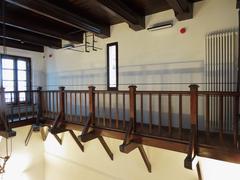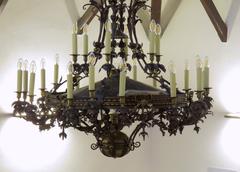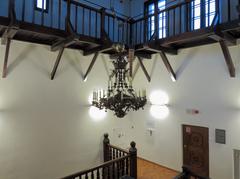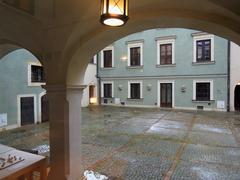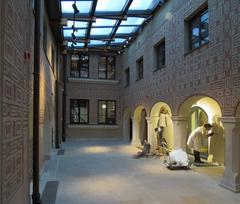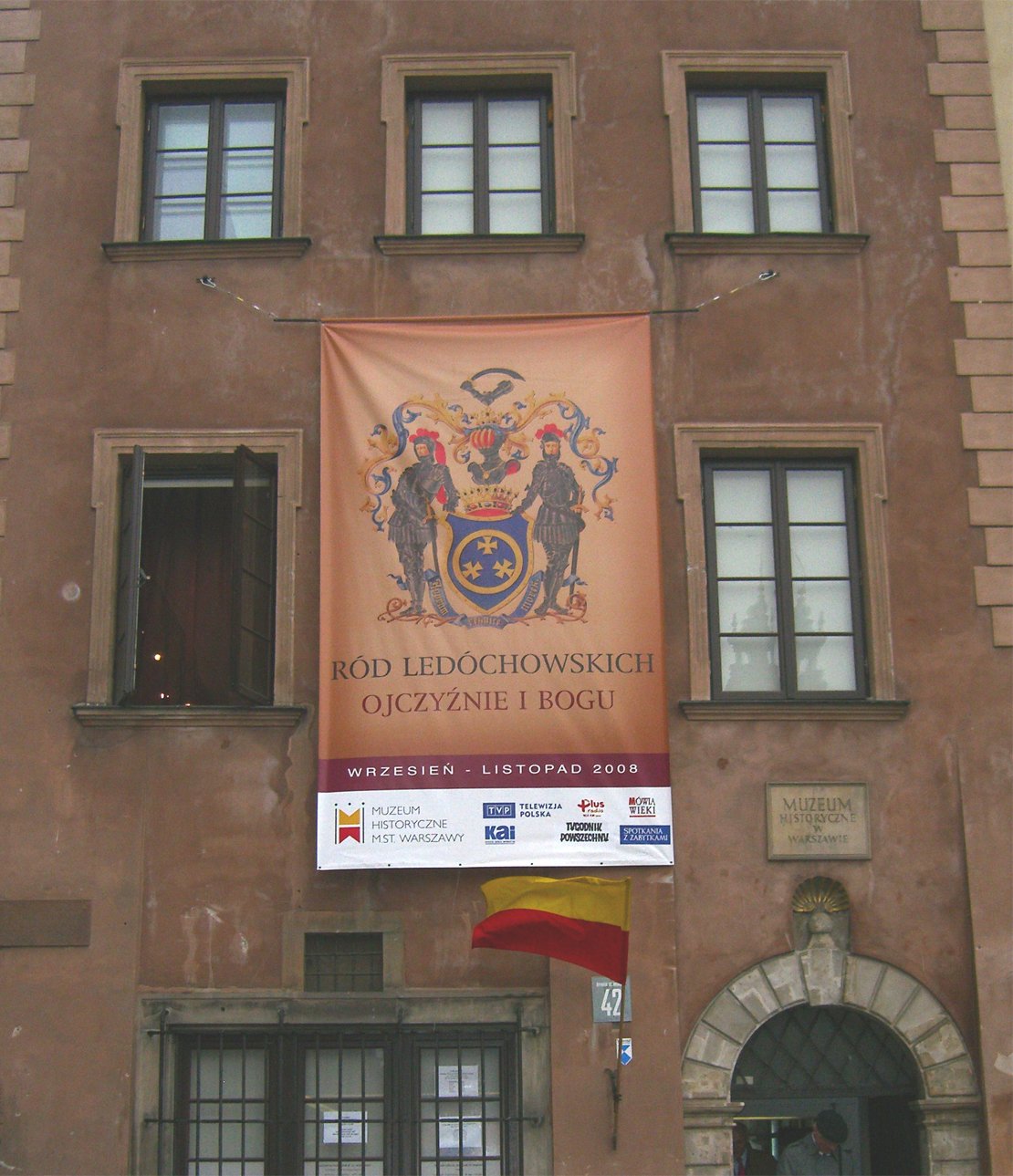
Museum of Warsaw: Complete Guide to Visiting Hours, Tickets, and Historical Highlights
Date: 14/06/2025
Introduction: The Museum of Warsaw’s Significance
Located in the heart of Warsaw’s UNESCO-listed Old Town, the Museum of Warsaw is a symbol of the city’s resilience, rich heritage, and ongoing transformation. Founded in 1936 as the Museum of Old Warsaw, shortly after Poland regained its independence, its mission has always been to preserve and celebrate Warsaw’s unique urban and cultural character. Today, the museum spans eleven meticulously restored townhouses on the Old Town Market Square, housing more than 250,000 artifacts that collectively narrate the story of Warsaw’s survival and renewal (Wikipedia; WhichMuseum; Muzeum Warszawy).
The museum’s innovative permanent exhibition, “The Things of Warsaw,” uses thousands of objects to illustrate seven centuries of the city’s history, from medieval times through its golden age, wartime devastation, communist era, and contemporary resurgence. With a commitment to inclusive design and accessibility, the Museum of Warsaw welcomes all visitors through wheelchair-accessible spaces, multilingual audio guides, and tactile exhibition aids (en.um.warszawa.pl; Museum of Warsaw official website).
This guide provides essential information for planning your visit, including current hours, ticket prices, accessibility details, exhibition highlights, nearby attractions, and practical tips for exploring this cultural landmark.
Table of Contents
- Museum Origins and Development
- Wartime Destruction and Postwar Reconstruction
- Evolution of Collections and Exhibitions
- Architectural and Urban Significance
- Visitor Information
- Recent Renovations and Modernization
- Exhibition Highlights
- Nearby Attractions
- Practical Visitor Tips
- FAQ
- Conclusion
- References
Museum Origins and Development
Established in 1936, the Museum of Warsaw (Muzeum Warszawy) was founded to protect, study, and share Warsaw’s heritage after Poland regained independence in 1918. Initially set within three townhouses on the Old Town Market Square, the museum’s scope quickly expanded, reflecting the city’s complex past. Its early collections included archaeological artifacts, paintings, graphics, sculptures, decorative arts, and architectural drawings, all closely tied to the city’s evolution (Wikipedia; WhichMuseum).
Wartime Destruction and Postwar Reconstruction
The devastation of World War II, particularly during the 1944 Warsaw Uprising, left the museum and much of the Old Town in ruins—its buildings and invaluable collections suffered extensive damage (Wikipedia). Between 1948 and 1954, a major reconstruction project, based on historic plans and photographs, meticulously restored the townhouses. This effort was emblematic of the city’s determination to reclaim its heritage, and the museum reopened as a symbol of Warsaw’s rebirth (Wikipedia).
Evolution of Collections and Exhibitions
Today, the Museum of Warsaw boasts an impressive collection of over 250,000 objects, spanning seven centuries. Notable highlights include:
- The original Old Town Mermaid statue, an enduring symbol of Warsaw (Muzeum Warszawy)
- Detailed models and dioramas of the city at various historical stages
- Personal memorabilia of historical figures such as Mayor Stefan Starzyński and WWII resistance hero Maciej Alek Dawidowski
- Artifacts from the Mazovian dukes, including centuries-old garments
- The largest painting by Wojciech Fangor, an acclaimed Polish artist
The acclaimed “Things of Warsaw” exhibition tells the city’s story through everyday objects, presenting history in a relatable, tangible way (WhichMuseum).
Architectural and Urban Significance
The museum’s eleven interconnected townhouses on Dekert’s Side of the Old Town Market Square are themselves part of the exhibit, representing Warsaw’s architectural journey and postwar restoration. These buildings, with their preserved cellars, stairways, and original features, immerse visitors in the layered narrative of Warsaw’s urban life (Muzeum Warszawy; WhichMuseum).
Visitor Information
Opening Hours
- Tuesday to Sunday: 10:00 AM – 6:00 PM
- Monday: Closed
Note: Hours may vary during public holidays or special events. Always check the official website before your visit.
Tickets and Discounts
- Regular ticket: 20–25 PLN (variation due to exhibition access)
- Reduced ticket: 10–15 PLN (students, seniors, persons with disabilities, teachers, eligible groups)
- Family ticket: 50 PLN (up to 2 adults and 3 children)
- Children under 7: Free
- Warsaw Pass holders: Free entry and priority access
- Varsovian Card holders: 10% discount
- Free admission: First Sunday of each month and Thursdays for permanent exhibitions
Tickets can be purchased at the ticket office or online via the official website. Online purchase is recommended during busy periods.
Accessibility
The museum is a national leader in accessibility among historic buildings (en.um.warszawa.pl). Features include:
- Step-free entrances, elevators, and ramps
- Accessible restrooms
- Tactile signage and Braille maps
- Audio guides (including descriptive content for visually impaired visitors)
- Assistance staff and welcoming of certified guide dogs
For tailored support, contact the museum in advance at +48 22 277 44 02 or email.
Guided Tours
Guided tours are offered in Polish, English, German, French, Italian, Russian, and Spanish. Advance booking is required, especially for groups. The cost for a foreign-language guided tour is typically 380 PLN per group. Tours offer deeper context and are especially beneficial for first-time visitors.
Facilities
- Cloakroom and Lockers: Free for all visitors.
- Restrooms: Accessible and located on the ground floor.
- Museum Shop: Wide range of books, souvenirs, and local crafts.
- Café: Offers refreshments and snacks in a relaxing setting.
Recent Renovations and Modernization
A major renovation between 2010 and 2012, supported by Norwegian grants, modernized the museum while preserving its historical character (Wikipedia). Upgrades included improved accessibility, new multimedia and interactive exhibits, and bilingual information panels (WhichMuseum). In 2014, the museum adopted its current name, reflecting its expanded mission and modern vision.
Exhibition Highlights
The permanent exhibition “The Things of Warsaw” is spread across 21 thematic rooms. Key highlights include:
- Room of Warsaw Legends: Myths and stories that shaped the city
- Room of Warsaw Portraits: Depictions of notable Varsovians
- Room of Silver and Jewelry: Decorative arts from Warsaw’s golden eras
- Archaeological Room: Early settlement artifacts
- Room of Warsaw Views: Panoramic artworks documenting the city’s changing skyline
Temporary exhibitions focus on contemporary urban issues, anniversaries, or Warsaw’s ongoing development. Multimedia installations and interactive screens enrich the experience.
Nearby Attractions
Situated in the Old Town, the museum is close to several other must-see sites:
- Royal Castle: Accessible, with guided tours (thesimpletravel.com)
- POLIN Museum of the History of Polish Jews: Modern and fully accessible (rachelirl.com)
- Warsaw Uprising Museum: Interactive and accessible (rachelirl.com)
- Łazienki Park: Accessible paths and cultural venues (en.um.warszawa.pl)
- Old Town Market Square: UNESCO World Heritage Site, vibrant with cafés and street performances (thesimpletravel.com)
Practical Visitor Tips
- Arrive early on weekends or holidays to avoid crowds.
- Download a museum map or pick one up at the entrance.
- Plan for 1.5 to 2.5 hours for a thorough visit.
- Combine your visit with a stroll around the Old Town Square.
- Check for free admission days (Thursdays and select Sundays).
- Use public transport; the nearest metro station is Ratusz Arsenał (Line M1), a 10-minute walk away.
Frequently Asked Questions (FAQ)
Q: What are the Museum of Warsaw’s opening hours?
A: Tuesday to Sunday, 10:00 AM – 6:00 PM; closed Mondays.
Q: How much are tickets?
A: Regular tickets are 20–25 PLN; discounts and family rates available. Admission is free on Thursdays and the first Sunday of each month.
Q: Is the museum accessible?
A: Yes—step-free entrances, elevators, accessible restrooms, tactile signage, and audio guides are provided.
Q: Are guided tours available?
A: Yes, in multiple languages by advance reservation.
Q: Can I take photographs?
A: Photography without flash or tripods is allowed in most areas.
Q: Are there lockers and a café?
A: Yes, both are available to visitors.
Q: What other attractions are nearby?
A: Royal Castle, POLIN Museum, Warsaw Uprising Museum, Łazienki Park, and the Old Town Market Square.
Conclusion
The Museum of Warsaw is more than a collection of artifacts; it’s a living chronicle of a city that has endured, rebuilt, and thrived through centuries of change. Its engaging exhibitions, accessible facilities, and prime Old Town location make it essential for anyone exploring Warsaw’s cultural and historical landscape. Book your tickets online, check for special events, and consider a guided tour for a deeper experience.
For the latest updates, ticket information, and guided tour schedules, visit the Museum of Warsaw official website, and download the Audiala app for personalized audio guides and resources.
References
- Museum of Warsaw – Wikipedia
- Museum of Warsaw – WhichMuseum
- Museum of Warsaw official website – Muzeum Warszawy
- Warsaw Accessibility Leader Award – en.um.warszawa.pl
- The 10 Best Tourist Attractions in Warsaw – thesimpletravel.com
- Warsaw Museums for History Lovers – rachelirl.com

